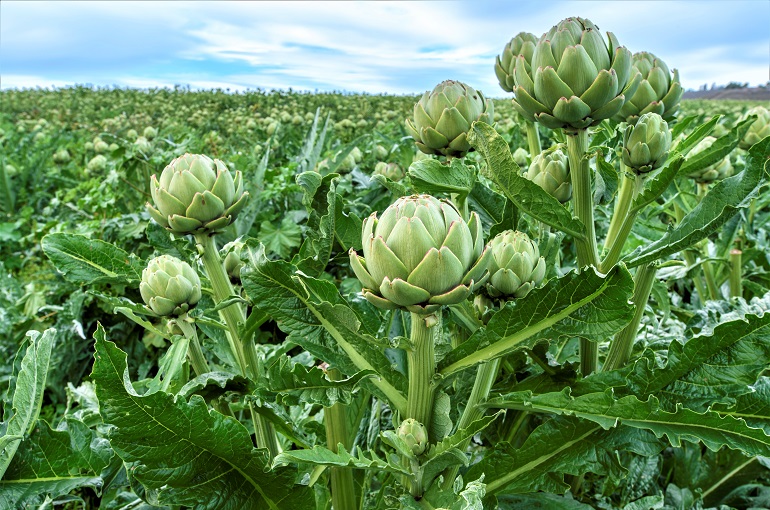How to Grow Artichokes for Profit – Professional Artichoke Farming

This post is also available in:
This post is also available in:
![]() Español (Spanish)
Español (Spanish) ![]() Français (French)
Français (French) ![]() Deutsch (German)
Deutsch (German) ![]() العربية (Arabic)
العربية (Arabic) ![]() Türkçe (Turkish)
Türkçe (Turkish) ![]() Ελληνικά (Greek)
Ελληνικά (Greek) ![]() Português (Portuguese (Brazil))
Português (Portuguese (Brazil))
Growing artichokes –if done rationally and on a scalable basis- can be a good source of income. In a few words, artichoke is a perennial plant, but growers in some areas may also treat it as an annual. Most commercial growers start the crop from offshoots or root crowns collected from mother artichoke plants. In most cases, the crop is perennial, so farmers keep the same plants in their field for 5-7 years. After this period, most artichoke growers plow and destroy the crop, because the productivity of the plants has decreased over time, despite the fact that the plants can live and produce some heads for a longer period.
The restrictive factor when growing artichokes is always the climate. Artichokes are cool-season vegetables. This means they thrive in mild cool but frost-free areas with high humidity. The optimum temperatures for artichoke cultivation are 20-24 °C (68-75 °F) during the day and 12-14 °C (54-57 °F) during the night. The plants can tolerate temperatures of -3 to -5 ℃ (26.6-23 °F), but any temperature below 1 ℃ (33.8 °F) is harmful to the artichokes. Artichokes can grow in a wide range of soils but prefer heavy, deep, fertile, loamy clay soils provided the aeration and drainage is proper for the plant to thrive. Moreover, the plants need good access to sunlight. Farmers should avoid artichoke cultivation in light soils with very low water holding capacity. We consider the pH of 6-7 as optimum, but the plants can grow even in soil with a pH of 8.
Field preparation is crucial when it comes to artichoke cultivation. Before transplanting, producers till the land some months before transplanting and integrate well-rotted manure into the soil. Some days before transplanting, they repeat the tilling to remove weeds and leave the soil loose and clean. They also design and place the drip irrigation system. When they are ready for transplanting, they dig holes 30 – 40 cm wide (12-15 inches) and plant the offshoots at a depth of 6 – 8 inches (15-20 cm). Fertilization, Drip Irrigation, and Weed Management are necessary in some cases. Most commercial artichoke varieties can be harvested during the summer when the heads have a commercially acceptable size. The number of heads per plant depends on the variety, climate conditions, and the age of the side shoots planted. If the plants produce too many heads, the producers may need to thin them. This will force the plant to transfer nutrients to fewer but bigger artichokes that can have the minimum size from a commercial point of view. When grown as annuals, the plants mature 4-6 months after seeding or transplanting (depending on the variety and the environmental conditions). Harvesting can be performed by hand, using scissors or knives, every 7-10 days for a 3-4 months period. After harvesting, artichoke growers remove most offshoots, keeping only 1-2 strong ones per artichoke plant. In cases of high frost risk, they cover the plants with soil and straw or install small antifrost tunnels to cover and protect them. Some producers destroy the remainings of the plant, treating it as an annual. They may also rotate the crop (with broad beans and artichokes) to control diseases and prevent soil degradation.
How to Grow Artichokes at Home
How to Grow Artichokes for Profit – Professional Artichoke Farming
Climate and Soil Requirements for Artichoke Farming
Soil Preparation and Planting in Artichoke Farming
Artichoke Water Requirements and Irrigation Systems
Artichoke Fertilization Requirements
Artichoke Farming: Harvest, Yield, Storage, and Post-harvest handling








































































